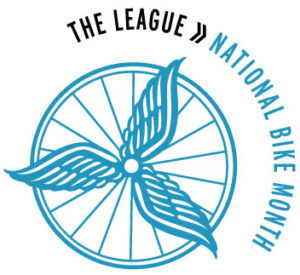 Bike Lanes
Bike Lanes
Bike lanes are defined as "a portion of the roadway which has been designated by striping, signing and pavement marking for the preferential or exclusive use by bicyclists". There is much debate, even in the cycling community as to the effectiveness of the Bike Lane in the attempts to improve safety and the flow of both motor vehicle and bicycle traffic. Much of the discussion treats the topic as either "all good" or "all bad". As with anything else, the truth lies somewhere in the middle. There are some very good applications of bike lanes, but there are also bike lanes that have been put in place seemingly just to say they are there. Bike lanes can be a wonderful addition to your ride, but have their own issues and, if not implemented properly, present more of a hazard than a help to cyclists.
Various Implementations
There are many implementations of bike lanes, some that do a very good job of improving bike traffic and adding a level of safety for cyclists, both physically and psychologically.
In heavy traffic areas, larger cities have had success in providing an avenue of safety for cyclists and as a result use of the bicycle in transportation has greatly increased. Other areas of the country, including Colorado as a whole, have had great success with the implementation of bike lanes on remote highways, giving some separation between the bicycles and higher speed motorists and allowing both to flow smoothly.
Responding to experience with early implementations, many cities are now marking the lanes not only with a striped line, but are painting the lane itself to give both the cyclists and motorists a better idea of where the bike lanes are. One other popular implementation of the bike lane is the addition of a buffer between motor vehicle traffic and the cyclists, in effect providing the cyclists with their own true roadway. Some buffers are simple flags or cones and some are a little more sturdy, including concrete walls.
Challenge of Bike Lanes
Debris. Bike lanes create a natural place for debris to accumulate, sometimes forcing cyclists out of the lane into traffic unexpectedly or, even worse, causing an accident for the cyclist. Cities that implement bike lanes must have an additional maintenance plan to keep them clear and safe, meaning additional cost to the city. Although not technically debris, don't forget that most bike lanes share space with the storm gutters and drains, creating additional obstacles.
Lack of a safe passing distance. Another problem with bike lanes, especially those that aren't separated by a barrier, is the false sense of security given to cyclists as they co-exist with traffic. A good example of this is how the bike lane can defeat the purpose of a safe passing distance. Even with a Safe Passing Law requiring a 3 foot distance when a motor vehicle passes a cyclist - when in the bike lane, the vehicles can come within inches of the cyclist and still be within the law. This issue has been solved in many cases by the creation of a buffer between the bike lane and normal lanes of traffic. Although this is much safer, it does mean additional cost and maintenance for the cities to take into consideration.
Poor Implementation. Thought must be given to the bike route system as a whole and care must be taken to avoid fixing a very local bike traffic or safety problem without having an adverse affect on the rest of the system. Lack of a contiguous bike lane system is an issue in many areas. Bike lanes will suddenly come to an end or be lawfully blocked by parked vehicles. Creating a safe bike lane at busy intersections is also a challenge - how do you accommodate the right turn lanes and yet allow bicycles to continue forward? We also have some local communities that have installed bike lanes, but allow motor vehicles to park in the lane during certain times of the day, which may be seen as "multi-use", but makes absolutely no sense to promoting use of the facilities. Here are pics of some of the implementations from around the country.
One last item in regards to bike lanes and behavior that we must constantly remind ourselves. Contrary to a popular educational video that instructs us on how to behave as cyclists at an intersection, it is illegal in most states for you as a cyclist to pass around cars on the right side in order to get closer to the intersection - UNLESS - you are in one of those very few states (two at last count) that allow this and there is a protected bike box for you.
What's the answer?
In short, bike lanes are not the cure all for concerns of cycling safety and flow, but do have their place. Cities must be selective in how they implement the bike lanes and include the consideration of lanes separated by a buffer of some sort. Cities must also have a good maintenance plan that they stick to in order to keep debris clear and quickly repair sections of the lanes that become hazardous to cyclists. Law enforcement must also be diligent and be willing to cite those motor vehicle drives that make the lanes hazardous. In a like vein, cyclists must be cited if they don't follow the same rules.
